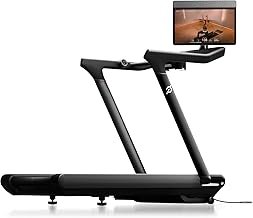Top Cardio Workouts That Burn the Most Calories per Minute
If you’re looking to get the most out of your workouts, focusing on cardio exercises that burn the most calories per minute is a smart strategy. Not only do these high-intensity options help you shed pounds faster, but they also boost your overall endurance and heart health. Here’s a detailed look at some of the top cardio workouts that can help you achieve your fitness goals efficiently.
High-Intensity Interval Training (HIIT)
HIIT combines short bursts of intense exercise with brief rest periods. This method revs up your metabolism and can burn more calories in less time. You might burn anywhere from 8 to 15 calories per minute, depending on the intensity of the exercises involved. Some effective HIIT workouts include:
- Sprinting paired with walking
- Biking at high resistance
- Bodyweight exercises like burpees and jump squats
Running
Running is a classic cardio workout that can burn significant calories when done at a brisk pace. Running at an average pace of 6 miles per hour can burn around 10 calories per minute. You can also increase your calorie burn by incorporating hill sprints or interval training into your runs. To maximize your results, consider tracking your pace and distance with a reliable app or a wearable device.
Useful Running Resources
For tips on proper running form and techniques, you can check out Runner’s World.
Cycling
Cycling, whether on a stationary bike or outdoors, offers an excellent cardiovascular workout. At a moderate pace, you can expect to burn about 8 calories per minute. Increase the intensity with faster cycling or added resistance, and you could burn up to 12 calories per minute. Group cycling classes also provide motivation and structure to keep you engaged.
Cycling Tips
For strategies on improving your cycling performance, visit Cycling Weekly.
Rowing
Rowing is another highly effective cardio workout that activates multiple muscle groups. With proper technique, you can burn around 10 to 12 calories per minute. This low-impact option is excellent for those who want a full-body workout without excessive stress on the joints. Try using a rowing machine at your gym or joining a rowing club for a fun group workout.
Rowing Resources
To learn more about rowing techniques and tips for beginners, check out Ergo Athlete.
Jump Rope
Jumping rope is a simple yet effective cardio workout that can burn between 10 to 15 calories per minute. It’s portable and can be done almost anywhere, making it a convenient option for busy schedules. different jump styles, like single-leg or double unders, can also keep your routine fresh and challenging.
Kickboxing
This high-energy workout can help you burn around 9 to 13 calories per minute. Kickboxing incorporates punches, kicks, and defensive movements, providing both a cardio and strength workout. Many gyms offer kickboxing classes, which can add fun and variety to your fitness regimen.
Kickboxing Information
For more on finding classes and gear, visit ACE Fitness.
Swimming
Swimming is an effective, low-impact workout perfect for burning calories while being gentle on your joints. Depending on the stroke and intensity, swimming can burn around 7 to 13 calories per minute. Incorporate different strokes and techniques for a well-rounded routine.
Swimming Techniques
For swimming drills and tips, check out Swimming World Magazine.
Final Thoughts
To maximize your calorie burn during cardio workouts, consider mixing and matching these activities throughout the week. Remember, consistency is key to achieving your fitness goals. Additionally, always consult with a healthcare provider before beginning any new fitness program.
Start incorporating these exercises into your routine today and watch as those calories drop, bringing you closer to your health and fitness aspirations!
The Science Behind Calorie Consumption During Cardio
Understanding calorie consumption during cardiovascular workouts is essential for anyone looking to improve their fitness and manage their weight effectively. While many people jump on the treadmill or go for a jog, not all cardio workouts are created equal when it comes to burning calories. By grasping the science behind calorie expenditure, you can maximize your workouts and achieve your goals more effectively.
Calories are a unit of energy that our body requires to perform daily tasks, including exercise. When you engage in cardio, your body uses energy (calories) to fuel your muscles. The number of calories burned during exercise can depend on various factors, including your weight, workout intensity, duration, and the type of cardio activity.
Factors Influencing Calorie Burn
Several key factors affect how many calories you burn during cardio workouts:
- Body Weight: Heavier individuals typically burn more calories during exercise than lighter individuals because it requires more energy to move a larger mass.
- Intensity: The harder and faster you work, the more calories you will burn. High-intensity workouts can significantly boost calorie consumption.
- Duration: Longer workouts will usually result in more calories burned. However, intensity can often outweigh duration when considering calorie expenditure.
- Type of Exercise: Different cardio activities have varying calorie burn rates. Activities such as running and cycling usually burn more calories than walking or swimming.
Average Calorie Burn for Different Cardio Exercises
Here’s a breakdown of the estimated calories burned per 30 minutes of different cardio activities for a person weighing around 155 pounds (70 kg):
| Exercise | Calories Burned |
|---|---|
| Running (6 mph) | 298 |
| Cycling (12-14 mph) | 298 |
| Jump Rope | 372 |
| Swimming (lap swimming) | 233 |
| Rowing (moderate) | 252 |
As seen in this table, different exercises can have dramatically different calorie burn rates. For instance, jump roping stands out as one of the top cardio workouts that burn the most calories per minute, making it an excellent choice for quick and effective workouts.
The Role of Heart Rate in Calorie Burning
Your heart rate plays a significant role in determining calorie expenditure. As your heart rate increases during intense workouts, your body shifts into a higher gear, burning more calories. To optimize your calorie burn, consider incorporating high-intensity interval training (HIIT) into your routine. HIIT alternates between short bursts of intense activity and lower-intensity recovery periods, resulting in higher overall calorie burn compared to steady-state cardio.
It’s also helpful to monitor your heart rate during workouts. Maintaining a heart rate between 70% to 85% of your maximum heart rate is generally considered optimal for maximum calorie burning.
Other Considerations for Effective Calorie Burning
In addition to the above factors, consider these strategies for enhancing your cardio workouts:
- Incorporate Strength Training: Adding strength exercises to your routine can boost your resting metabolic rate, resulting in more calories burned even when you’re not exercising.
- Stay Consistent: Regularly engaging in cardiovascular exercise is key for long-term success in burning calories and managing weight.
- Nutrition Matters: Fueling your body with the right nutrients plays a significant role in performance and recovery, which can indirectly enhance calorie burn.
By understanding the science behind calorie consumption during cardio workouts, you can tailor your approach to achieve optimal results. Taking into account factors like your weight, workout intensity, and frequency will help you find the best cardio exercises for your goals. To dive deeper into the science of fitness and calorie burning, visit ACE Fitness and NCBI.
Maximizing your cardio workouts for calorie burn doesn’t have to be complicated. With the right information and techniques, you can work out more efficiently while achieving your fitness goals.
Comparing High-Intensity Interval Training (HIIT) and Steady-State Cardio
When it comes to cardio workouts, many people are often torn between two popular methods: High-Intensity Interval Training (HIIT) and steady-state cardio. Both have unique benefits, and understanding their differences can help you tailor your fitness routine to meet your personal goals. Below, we will dive into the characteristics, advantages, and ideal uses for each approach to help you decide which might be best for you.
What is High-Intensity Interval Training (HIIT)?
HIIT involves short bursts of intense exercise followed by rest or low-intensity periods. This training method is known for maximizing calorie burn in a shorter amount of time. An example of a HIIT session could include a 30-second sprint followed by a one-minute walk, repeated for 20-30 minutes.
Benefits of HIIT
- Time Efficient: HIIT workouts can be completed in as little as 15-30 minutes, making them ideal for busy schedules.
- Calorie Afterburn: Post-exercise oxygen consumption (EPOC) means you continue to burn calories long after your workout is over.
- Improved Metabolism: HIIT can elevate your metabolic rate, enhancing fat loss.
- Variety: The different intervals keep workouts exciting, helping to maintain enthusiasm and avoid monotony.
What is Steady-State Cardio?
Steady-state cardio is characterized by performing aerobic exercise at a consistent and moderate intensity for an extended period. Activities such as jogging, cycling, or swimming at a steady pace typically fall into this category. A common recommendation is to aim for 30-60 minutes of steady-state cardio.
Benefits of Steady-State Cardio
- Improved Endurance: This method builds aerobic capacity and endurance, allowing for better performance in various physical activities.
- Lower Injury Risk: Steady-state cardio often involves lower intensity, which can reduce the risk of injury associated with high-impact activities.
- Accessibility: It is suitable for all fitness levels and can be easily modified to match individuals’ capabilities.
- Mental Relaxation: Many people find steady-state cardio helps clear their minds and contributes to relaxation.
Comparative Analysis
| Feature | HIIT | Steady-State Cardio |
|---|---|---|
| Duration | 15-30 mins | 30-60 mins |
| Calorie Burn | High during and after | Moderate during |
| Intensity | High | Moderate |
| Impact on Muscle | Preserves muscle mass | May lead to muscle loss if overdone |
| Learning Curve | Requires basic fitness knowledge | Easy for beginners |
Which One Should You Choose?
Your choice between HIIT and steady-state cardio often depends on your individual fitness goals and lifestyle. If you are pressed for time or looking to maximize calorie burn quickly, HIIT may be the optimal choice for you. On the other hand, if your aim is to improve endurance or you’re at the beginning of your fitness journey, steady-state cardio might be more suitable.
The integration of both methods into your routine can also be a powerful strategy. Alternating between HIIT and steady-state cardio not only keeps your workouts fresh but also allows you to reap the benefits of both types of training. Combining these approaches can lead to significant improvements in cardiovascular health and overall fitness.
For more information on HIIT and steady-state cardio, you can visit Verywell Fit or explore Healthline to learn more about the impact of different types of cardio workouts on overall health.
Whether you choose high-intensity workouts or a steady-state approach, the crucial part is to remain consistent and find the exercise that you enjoy. Remember to listen to your body and adapt your training style to best fit your needs.
Best Cardio Equipment for Maximum Caloric Burn
When you’re aiming to torch calories and improve your cardiovascular health, choosing the right cardio equipment can make a significant difference. Let’s explore the most effective machines that can help you burn the maximum amount of calories in a shorter period, keeping your workouts efficient and impactful.
Treadmill
The treadmill is a staple in gyms for a reason. It’s versatile and allows for a range of workouts from walking to sprinting. You can adjust the incline to increase the intensity, which leads to more calories burned. On average, running at a moderate pace can burn around 10-15 calories per minute, depending on your weight and speed.
Benefits of the Treadmill:
- Impact control: You can choose between walking and running.
- Capability for interval training: Alternate between sprinting and walking for maximum caloric burn.
- Accessibility: Suitable for all fitness levels.
For more information on running techniques, you might check [Runner’s World](https://www.runnersworld.com) for tips on efficient training.
Stationary Bike
Stationary bikes, whether upright or recumbent, are also fantastic for burning calories. High-intensity cycling can burn anywhere from 8-12 calories per minute. This piece of equipment is excellent for low-impact workouts, making it a favorite among those with joint issues.
Benefits of Stationary Bikes:
- Low impact: Easier on the joints compared to running.
- Customizable resistance: Increase resistance for a more challenging workout.
- Variety of workouts: Options like spinning classes or steady-state cycling.
Explore workout routines for stationary biking at [Spinning](https://www.spinning.com).
Rowing Machine
If you’re looking for a full-body workout, the rowing machine is an excellent choice. A vigorous session can burn about 10-15 calories per minute. It engages both the upper and lower body, making it ideal for those who want to maximize caloric expenditure.
Benefits of the Rowing Machine:
- Engages multiple muscle groups: Involves legs, arms, and core.
- Cardio and strength combo: Improves endurance while building muscle.
- Adjustable resistance: Suitable for all fitness levels.
For tips on rowing techniques, visit [Concept2](https://www.concept2.com) to enhance your skills and performance.
<h3=“Jump Rope”>
Jumping rope is not only portable but also incredibly effective for boosting calorie burn. Depending on your speed and technique, you can burn approximately 10-16 calories per minute. It’s a fun way to incorporate cardio into your routine.
Benefits of Jump Rope:
- Portable: You can use it anywhere.
- Cost-effective: Requires minimal investment.
- Great for coordination: Improves agility and balance.
Check out [Jump Rope Workouts](https://www.jumpropeworkout.com) for advanced techniques and routines.
Elliptical Trainer
The elliptical trainer is another excellent choice for burning calories. Users can expect to burn around 6-10 calories per minute, depending on the intensity of the workout. The elliptical mimics walking or running without putting too much strain on the joints.
Benefits of the Elliptical Trainer:
- Low impact: Less stress on knees and hips.
- Upper body engagement: Depending on the machine, you can work your arms as well.
- Error resistance: Most machines come with a display for tracking heart rate and calories.
Learn more about effective elliptical workouts on [Verywell Fit](https://www.verywellfit.com) to keep your routines fresh.
Stair Climber
The stair climber provides a unique way to get your heart rate up. Climbing stairs can burn about 8-11 calories per minute. It’s a great workout for your lower body and cardiovascular fitness.
Benefits of the Stair Climber:
- Strengthens lower body: Excellent for toning legs and glutes.
- Engaging workout: Keeps your heart rate elevated.
- Varied intensity: Adjust speed and effort for optimal results.
For more insights on stair climbing efficiency, head to [Healthline](https://www.healthline.com) for detailed guides and tips.
Choosing the right cardio equipment can greatly influence your workout results. By selecting machines that fit your preferences and fitness level, you can optimize your calorie burn while enjoying your workout routine. No matter what equipment you choose, staying active is the key to your fitness journey.
Incorporating Cardio Workouts into Your Weekly Routine
Cardio workouts are essential for maintaining a healthy lifestyle. Adding them into your weekly routine can help boost your mood, increase your endurance, and burn calories effectively. Here’s a detailed guide on how to incorporate cardio workouts into your week, making it easy and engaging.
Understanding Your Cardio Needs
Before diving into specific workouts, it’s crucial to understand your own fitness level and goals. Here’s how you can assess your needs:
- Evaluate Your Fitness Level: Are you a beginner or more advanced? Knowing where you stand helps you choose the right intensity.
- Set Realistic Goals: Whether it’s losing weight, improving heart health, or increasing stamina, clear goals will keep you motivated.
- Schedule Convenience: Consider how many days a week you can realistically dedicate to cardio. Aim to start with at least three days.
Types of Cardio Workouts to Include
There are several engaging cardio workouts to choose from. Mixing them up can prevent boredom and work different muscle groups. Here are some of the top options:
- Running or Jogging: Simple and highly effective. You can do this outdoors or on a treadmill.
- Cycling: Whether on a stationary bike or a bicycle, cycling is great for burning calories while being easy on the joints.
- HIIT (High-Intensity Interval Training): Short bursts of intense activity followed by rest periods, HIIT is excellent for maximizing calorie burn in a short time.
- Swimming: A full-body workout that’s low impact, swimming builds stamina and strength simultaneously.
- Dancing: Fun and energetic, dance workouts like Zumba can help you enjoy cardio without it feeling like exercise.
Sample Weekly Cardio Schedule
Here’s an example of a balanced weekly cardio routine. Customize based on your fitness level and preferences:
| Day | Workout | Duration |
|---|---|---|
| Monday | Running | 30 minutes |
| Tuesday | HIIT | 20 minutes |
| Wednesday | Rest/Active Recovery | – |
| Thursday | Cycling | 40 minutes |
| Friday | Swimming | 30 minutes |
| Saturday | Dance Class | 45 minutes |
| Sunday | Rest | – |
Tips for Staying Consistent
Sticking to a cardio routine can be challenging, but here are a few insights to help you maintain consistency:
- Pair it with Fun: Choose activities you enjoy. This makes it easier to stay committed.
- Use Music or Podcasts: Listening to your favorite tunes or interesting podcasts can make workouts feel shorter and more enjoyable.
- Track Your Progress: Keep a journal or app to log your workouts. Seeing improvements can be highly motivating.
- Stay Flexible: If you miss a workout, don’t stress. Get back on track as soon as possible.
By effectively incorporating cardio workouts into your week, you not only improve your health but also make fitness a fun part of your daily routine. Explore more about effective workout strategies and tips at ACE Fitness and Mayo Clinic.
The Importance of Nutrition in Conjunction with Cardio Exercise
When you think about getting fit, cardio exercise may come to mind first. However, the importance of nutrition in combination with cardio cannot be overstated. Your body needs the right fuel to get the most out of your workouts. By understanding how nutrition complements cardio, you can enhance your performance and achieve your fitness goals more effectively.
Fueling your body with the appropriate nutrients is crucial during any form of exercise, especially cardio. When you engage in activities like running, cycling, or dancing, your muscles consume energy. This energy primarily comes from the food you eat. Here’s why nutrition and cardio go hand in hand:
The Role of Carbohydrates
Carbohydrates are the main energy source for your workout. They convert into glucose, which your body uses during cardio sessions. Choosing the right type of carbs can influence your performance significantly:
- Complex Carbohydrates: Foods like whole grains, beans, and vegetables provide lasting energy. Since they digest slowly, they keep your energy levels stable during longer cardio workouts.
- Simpler Carbohydrates: Fruits and honey can offer a quick energy boost, which is beneficial before workouts that require a burst of energy. Ideal for high-intensity sessions!
Protein’s Critical Contribution
While carbs fuel your workout, protein plays a crucial role in recovery. After cardio, your muscles need protein for repair and growth. It helps in reducing soreness and enhancing muscle recovery. Here are some excellent sources of protein:
- Lean Meats: Chicken and turkey are easily digestible and rich in protein.
- Plant-Based Options: Lentils, chickpeas, and quinoa are great if you’re vegetarian or vegan.
- Dairy Products: Greek yogurt is convenient and packed with protein, making it a good post-workout snack.
Healthy Fats for Energy
While you might think fats should be avoided, healthy fats are essential for overall health and can provide sustained energy during longer cardio sessions. Some good sources of healthy fats include:
- Nuts and Seeds: Almonds, walnuts, chia seeds, and flaxseeds are excellent options.
- Avocado: It’s rich in monounsaturated fats and can offer a good source of energy.
Hydration and Its Impact
Staying hydrated is another key factor when pairing nutrition with cardio. Water helps regulate your body temperature and lubricates your joints during exercise. Dehydration can lead to fatigue, dizziness, and decreased performance. Aim to drink water before, during, and after your workouts. Signs that you may need more fluids include:
- Increased thirst
- Dry mouth
- Dark yellow urine
| Time | Nutrition Tip | Suggested Food |
|---|---|---|
| Before Workout | Fuel up with complex carbs | Oatmeal with sliced banana |
| During Workout | Stay hydrated | Water or electrolyte drink |
| Post Workout | Replenish with protein and carbs | Grilled chicken with sweet potatoes |
Proper nutrition can also enhance your endurance during cardio exercises. When you’re well-nourished, your body can drain energy reserves more efficiently, enabling you to keep going for longer. The Academy of Nutrition and Dietetics provides excellent resources to help you understand your nutritional needs based on your cardio routine.
If you’re looking to maximize the benefits of your cardio workouts, pairing it with a solid nutrition plan is essential. Whether you’re running, cycling, or dancing, your performance, recovery, and overall fitness will greatly improve when you fuel your body correctly with nutrients. Motivation and discipline are needed to keep working out, but without the right nutrition, your efforts could go to waste.
For detailed information on how to better fuse nutrition with exercise, consider visiting Nutrition.gov, a comprehensive resource for dietary guidelines and recommendations.
Debunking Common Myths About Cardio Workouts and Weight Loss
When it comes to fitness, cardio workouts often take the spotlight, especially in conversations about weight loss. However, there are many myths surrounding these kinds of exercises that can mislead individuals on their journey to a healthier lifestyle. It’s essential to clear up these misconceptions so you can make informed decisions about your fitness routine.
Myth 1: More Cardio Always Equals More Weight Loss
Many believe that the more cardio you do, the more weight you will lose. While cardio is beneficial for burning calories, it’s not a one-size-fits-all approach. Overdoing it can lead to fatigue and injury, which could derail your weight loss efforts. Additionally, your body can adapt to long periods of cardio, making it less effective over time.
Myth 2: Cardio Is the Only Way to Lose Weight
This myth is particularly harmful because it ignores other vital factors like strength training, diet, and lifestyle changes. Strength training can be equally effective for weight loss because it builds muscle, which helps raise your resting metabolic rate. both cardio and strength training into your workout routine can optimize your weight loss results.
Myth 3: You Can’t Lose Weight Without Spending Hours Doing Cardio
Many people think that long cardio sessions are necessary to see results. However, high-intensity interval training (HIIT) can be much more effective in burning calories in a shorter amount of time. Studies show that HIIT not only burns calories during the workout but also boosts metabolism afterward. So, you might spend just 20-30 minutes in a HIIT session and still see impressive results.
Myth 4: Cardio Can Spot Reduce Fat
Some individuals believe that doing cardio on specific body parts can help them lose fat in those areas. Unfortunately, spot reduction is a myth. Your body loses fat in a holistic manner, determined by genetics and overall body composition. Focusing on total-body fat loss through a combination of cardio and strength training is the most effective way to see any changes in specific areas.
Myth 5: You Have to Sweat Profusely to Get a Good Workout
While sweating can be a sign that you’re exerting yourself, it’s not the only indicator of a good workout. You can still attain fitness goals while feeling relatively dry. What matters is the intensity of the workout and how your body responds to the exercise, not just the sweating involved.
Myth 6: Cardio Is Only About Endurance
Another common misconception is that cardio is purely about endurance exercises, like running for long distances. However, cardio encompasses a variety of forms, including cycling, swimming, and racquet sports. Each offers different benefits and can keep your routine exciting. Finding the type of cardio you enjoy will help you stick with it long-term.
Debunking These Myths for Optimal Results
Understanding these common myths can help you approach your fitness journey in a way that aligns with your personal goals. Here are some tips to debunk these misconceptions:
- Incorporate Variety: Mix up your cardio workouts with different types of exercises to prevent boredom and avoid plateaus.
- Listen to Your Body: Pay attention to how your body feels during and after workouts. Rest and recovery are crucial for sustained success.
- Consider Your Diet: Pair your exercise routine with a balanced diet to maximize your weight loss efforts.
Always consult fitness professionals or nutritionists to personalize your fitness routine and dietary plans. You can find valuable resources on websites like ACE Fitness and SELF for expert insights and tips.
Effective Cardio Workouts
| Cardio Workout | Calories Burned (per 30 min) |
|---|---|
| Running (6 mph) | 300-400 |
| Cycling (Mod. Intensity) | 200-300 |
| Swimming (Freestyle) | 300-450 |
| HIIT Training | 250-400 |
Myths about cardio workouts and weight loss shouldn’t hold you back from achieving your fitness goals. By being informed and focusing on a balanced approach to exercising and nutrition, you can find success in your weight loss journey. Remember, everyone’s body is unique, and what works for one person may not work for another. Stay curious, keep learning, and enjoy the process!
Key Takeaway:
When it comes to burning calories, understanding the most effective cardio workouts is essential for anyone looking to lose weight or maintain a healthy lifestyle. This article delves into various aspects of cardio workouts that burn the most calories per minute, ultimately offering you a comprehensive guide to achieve your fitness goals.
To kick things off, we explored the science behind calorie consumption during cardio exercises. It’s crucial to know how your body uses energy when you engage in different types of cardio, as this can guide you in selecting the right workout for your needs. High-Intensity Interval Training (HIIT) stands out as a powerful method for burning calories quickly. By alternating between short bursts of intense effort and lower-intensity recovery periods, HIIT can maximize your calorie burn while being more time-efficient compared to steady-state cardio.
In addition to HIIT, we compared various forms of cardio, including more traditional approaches, giving you a fuller picture of your options. If you prefer using equipment, we highlighted the best machines for maximum caloric burn—like the treadmill, elliptical, and rower—enabling you to select workouts that suit your style.
Cardio workouts into your weekly routine is essential for consistency and long-term success. We provide practical tips on how to structure your week, stressing the importance of balancing workouts with rest days to prevent burnout. Nutrition also plays a critical role in your results; we examined how proper meal planning and nutrient intake can enhance your cardio efforts, making sure your body has the fuel it needs.
We tackled common myths surrounding cardio and weight loss, helping you differentiate between fact and fiction. The key takeaway is that while cardio can be effective for calorie burning, a comprehensive approach that includes proper nutrition and smart workout choices is the best way to achieve your fitness goals. By employing high-calorie-burning cardio workouts, selecting the right equipment, and debunking myths, you can take informed steps toward a healthier lifestyle.
Conclusion
Achieving your fitness goals can become more attainable when you understand the effective cardio workouts that burn the most calories per minute. By embracing high-intensity interval training (HIIT) alongside steady-state cardio, you can optimize your workouts for maximum caloric expenditure. Remember, the right equipment can enhance your performance, whether you prefer using a treadmill, stationary bike, or rowing machine.
These workouts into your weekly routine creates a balanced fitness plan that incorporates cardio’s benefits for heart health and endurance. However, it’s crucial to combine your efforts with proper nutrition to fuel your body adequately and support recovery. With the right approach, you’ll maximize the benefits of your cardio efforts.
As we debunk common myths surrounding cardio and weight loss, it becomes clear that understanding your body’s needs is vital for success. Emphasizing quality over quantity in workouts can lead to an effective calorie burn while promoting overall well-being.
By implementing these insights, you can transform your cardio regimen and enhance your weight loss journey. Tailor your workouts to fit your lifestyle and needs, ensuring they are enjoyable and sustainable. With dedication, a strategic plan, and the right mindset, you can create effective cardio sessions that keep you engaged and on track to reach your fitness goals.












